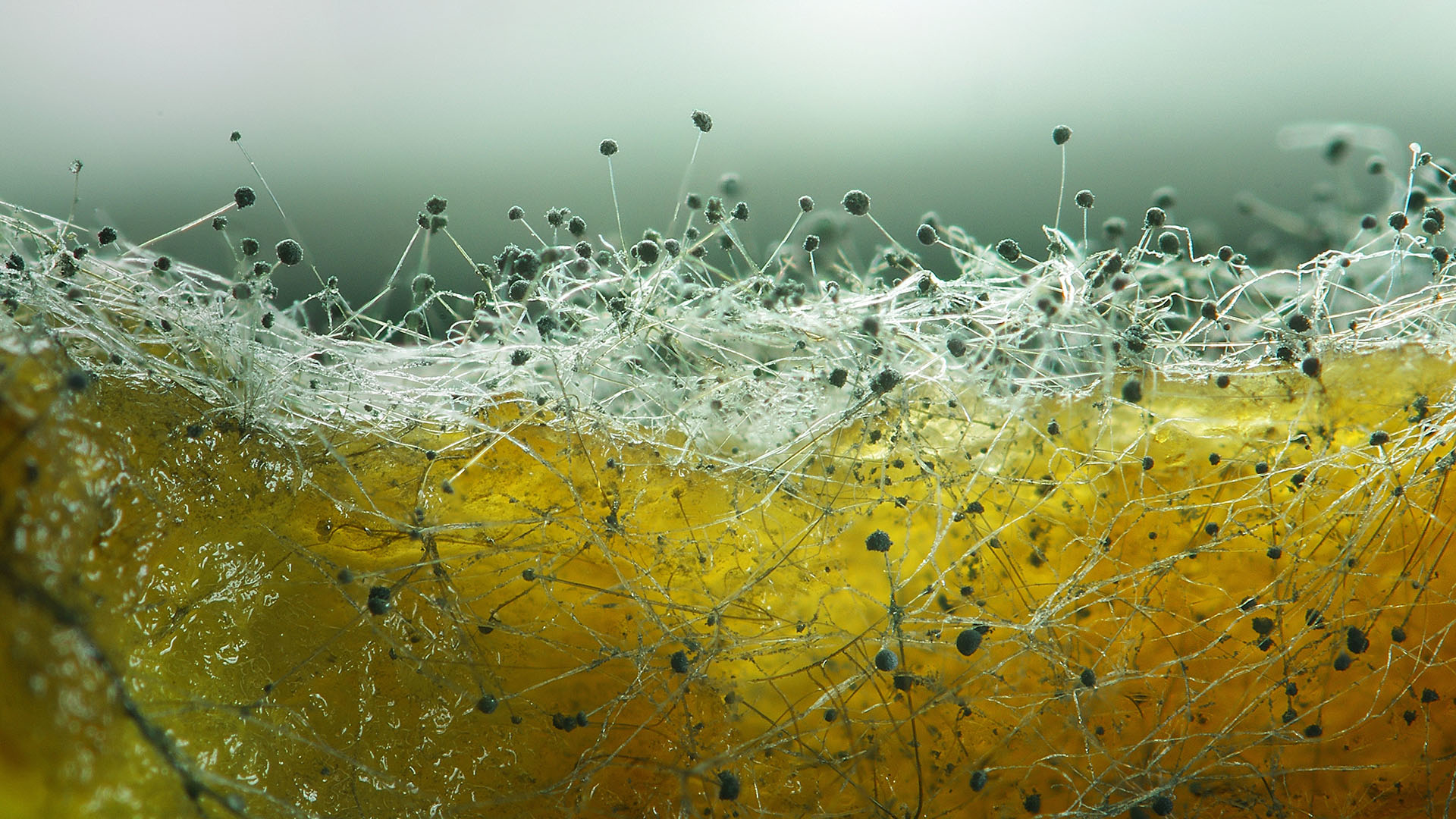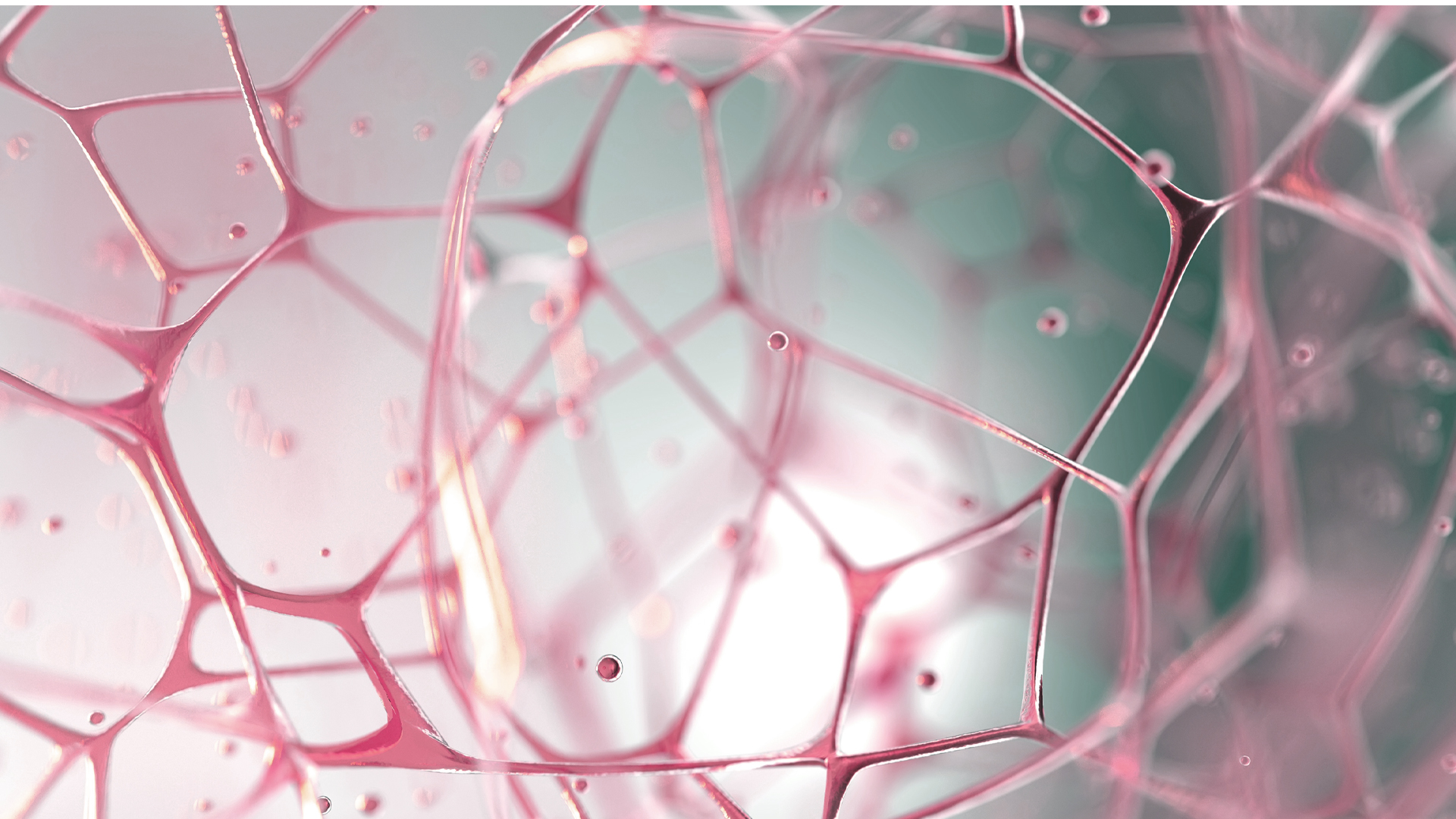Mold Toxicity and What To Do About It
Exhaustion, muscle cramps, shortness of breath, blurred vision, and neurological impairment – symptoms that many doctors attribute to autoimmune disorders or otherwise undiagnosed chronic illness. These symptoms may come and go, others remaining, yet all show signs of a deeper struggle: the struggle of a body under toxic assault
The prevalence of toxins in our environment has been a widespread concern among healthcare specialists, scientists, and the general public for some time. Traditionally, heavy metals, pesticides, and other biological compounds have been the more typical sources that have leaked into our environment at what feels like every turn.
Toxic Origins
Although the effects of these toxins have had a profound impact on the health of millions across the world, there lurks a different source that has most likely invaded your home – mold. You might not realize that mold can make you sick, but in truth, many common molds found within houses and on food sources are now being recognized as a fundamental cause of chronic disease.
This isn’t just limited to black mold, also known as Stachybotrys. Instead, several common genera of indoor molds including Cladosporium, Penicillium, Aspergillus, Alternaria and Trichoderma all have been shown to be toxic and can cause severe harm. Diagnosing, however, faces an uphill journey among physicians – mostly due to the limitations in mold detection strategies
Despite previous obstacles, a groundbreaking shift in integrative and functional medicine has finally begun to peel back the mask of this hidden ailment. The first step? Understanding what mold toxicity is and its impact on the human body. Through awareness, we can change the game for many battling mold-induced illness. At Innovative Medicine, we’ve put together a comprehensive guide to help you identify potential indicators of mold in your home. This guide can be used to help defend yourself against this modern-day health crisis, one step at a time.

Mold Toxicity and Where to Find It
Molds are a type of fungi that prefer warm, damp, and dark places to grow. They often spread quickly and reproduce by making incredibly hardy spores that can float through the air. They’re quick to grow and extremely adaptable to most environments. Unfortunately, molds make up one of the most common allergens and can induce an extremely strong immune response. This overwhelming response can manifest by interrupting normal respiratory function and swiftly inflaming the lungs and sinus cavities. Some estimates suggest that nearly 20% of asthma cases are specific allergen responses to indoor mold. In addition to mold allergens, mold toxicity can occur from exposure to something much more toxic in their nature: the poisonous secretions they produce.
These secretions come primarily in two forms – mycotoxins and MVOCs (microbial volatile organic compounds) – and serve as profound defense mechanisms. The more resilient the mold, the more potent the toxins.
Common symptoms for mold toxicity can present themselves in many ways – stumping most physicians – including but not limited to:
- Fatigue
- Weakness
- Aches
- Muscle Cramps
- Headache
- Sinus Problems
- Shortness of Breath
- Abdominal Pain
- Joint Pain
- Memory Issues
- Focus/Concentration Issues
- Disorientation
- Moodswings
- Disrupted Appetite Patterns
- Sweats
- Temperature Regulation
- Excessive Thirst
- Numbness
- Vertigo
- Metallic Taste
- Tremors
The History of the Mold Revolution
Alas, humans have had an unfortunate and significant impact on the way molds have evolved over the last 50 years. Much like antibiotics to bacteria, changes in farming practices and antifungals have reshaped the global mold landscape.
Although herbicides were effective in eradicating upwards of 95% of mold on agriculture, the remaining lines were not only chemically resistant, but they exhibited strong toxic responses. The secretion of their mycotoxins and MVOCs work to claim their food and defend their territory against other organisms. As weaker molds gave way, the development of more potent mold strains have been perpetuated. Farming practices helped to eliminate the majority of mold on foods, extending the shelf life for most produce. However, humans have inadvertently supported the evolution of more toxic strains.
Mold species invasive to homes have also seen substantial changes.
In 2009, the World Health Organization estimated that anywhere from 10-50% of indoor environments in most first world nations have clinically significant levels of mold. In some cases, these numbers are higher and can vary based on climate1. Changes in how we build homes have also changed the breeding ground for many molds by improving insulation strategies and reducing airflow in structures. This has also reduced the visibility of mold, making many house inspections fall short in identifying problematic mold sources.
Though mold is well evidenced in many homes, most people can spend years without realizing they’re experiencing strong reactions to it in their home environment. Common symptoms for mold toxicity can appear as exacerbated asthma or respiratory conditions or induce neurological changes and musculoskeletal pain. Not only can mold make you sick, it can impact quality of life. It can cause intense physiological reactions that can take years to heal.
Part of the danger in mold toxicity is how difficult it can be to diagnose and treat. Once exposed, the spores enter your system most commonly through the nasal cavity (by breathing them in) or by consuming them on foods. From there, they can integrate into your body and produce invasive levels of mycotoxins. By embedding themselves into the membrane of each cell, they can even spread by contact from one to another.

5 Ways to Fight Mold in Your Home
1. Stick to Local, Seasonal Foods
If you enjoy apples in March and strawberries in December, you’re most likely eating imported foods. Though different climates have the ability to grow the foods we love year-round, better shipping practices means the produce you’re buying from your local grocer could be weeks old. The longer these foods take to be transported, the higher your risk for unintentionally consuming mold growing on it. To reduce your risk of ingesting older produce, try to purchase organic, seasonal items from your local market or one of the various nearby farms. Often, these foods not only have higher quality nutrients, but they have reduced level of toxins in the forms of both pesticides and mold growth.
2. Try Switching to Freshly Frozen Foods
If you are craving blueberry cobbler this winter, you can always purchase freshly frozen fruits and vegetables that give you access to nonseasonal foods whenever you feel. Organic, frozen produce has been shown to actually have higher vitamin and mineral contents than many “fresh” produce equivalents due to picking and packaging practices. Frozen foods are often picked ripe and immediately cleaned and prepared for packaging, sealing in the freshness and greatly reducing mold accrual.
3. Water Leak? Don’t Wait til Monday for Help
Check all barriers to water sources and make sure they’re sealed. Regular maintenance for kitchen and bathroom seals can reduce moist conditions forming inside your walls and behind showers. Don’t forget to regularly check for water leaks beneath your home. Faulty plumbing has proven to be one of the most common reasons for mold growth in homes. A small leak, however insignificant, can make an instant breeding ground for ready-to-spring mold spores. If you find a leak in your home, immediately work to dry the area. This also leads us to our next trick.

4. Reduce the Humidity In Your Home – Buy a Dehumidifier
Fungi love warm, dark, moist environments. One of the best ways to reduce their spread is by keeping your home (and basement/attic) dry with the help of a dehumidifier. Not only can you set specific parameters for the humidity in your home, but they work particularly well when a leak does occur. We recommend also keeping one in your basement running at all times. The average cost can be minimal, especially compared to the alternative: professional mold removal methods.
5. Before Purchasing a New Home, Find a Great Home Inspector
Finding a home you love can be painstaking – tack on a poor review from a home inspector and getting that dream home can feel near impossible. Although frustrating and taxing, getting a meticulous home inspector can save you tons of money down the road. Not to mention, it can help you identify problematic mold potential. A good home inspector will see past the potential “newness” of a home and view a house tactically. Just remember, no home is immune. If your report looks too clear to be true, most likely it is. Fortunately, a good home inspector often costs similar to a mediocre one and can be one of the most cost-efficient choices you can make in securing your home from mold.
Testing Your Home Might Save Your Health
If you’re already settled in your home, preventative methods might not cut it. Unfortunately, so many people may not notice the effects mold has on their health until it’s too late. The symptoms for mold toxicity can mirror many other conditions. This is due to their ability to interrupt various biological processes inside the body. This has made it difficult to identify by symptoms alone, though some individuals have become so sensitive to invasive molds that they ultimately develop almost a super-human recognition of it. These individuals – called canaries (think canary in a coal mine) – are more susceptible to environments afflicted by mold. If you’re not hypersensitive to mold, though, it might be near impossible for you to gauge the safety of your own home.
Testing your air quality with the help of a mold-specific analysis can help you assess where your home stands. Unfortunately, many reports fall short, supporting the need for more strenuous testing technologies. Various techniques include setting up pumps in a home to catch floating mold spores. However studies have shown these strategies have major limitations, with many homes testing negative for toxic molds despite clear evidence otherwise. The best method for mold diagnosis would be to hire a professional with access to the top tests on the market. Currently, even these methods have severe limitations but have shown to be more reliable than at-home surface tests. The Environmental Relative Moldiness Index, or ERMI for short, detects DNA for several common mold strains and uses a complex algorithm to determine the actual predicted mold content in a home. Other integrative tests include more specific DNA scans such as the HC-45 analysis that can detect 45 different molds.
Some specialists will also include laboratory tests using ELISA assays to analyze mycotoxins commonly found in dust samples. Tests should be taken regularly in various locations inside your home – however these methods are often expensive. Needless to say, the most prominent gaps for mold assessment is the lack of accessibility, cost efficiency, and reliability of current strategies.
If mold is caught in your home, take a deep breath – cautiously – and prepare to hire a specialist. Getting rid of toxic mold is dangerous and requires special handling. Contact a specialist that will safely remove the mold for you.
Diagnosing Mold Toxicity in You
With symptoms often mimicking other conditions, assessing whether you – yourself – are struggling with symptoms for mold toxicity can be challenging. The science behind many tests has been controversial, yet impressive strides have occurred recently with mold-related illness diagnosis. Originally, testing for mold exposure was reduced to simply testing for mold allergies. Currently, though, many tests can determine the presence of mycotoxins in urine (including 15 different kinds). Additionally, testing your blood can show any heightened inflammatory response and verify the level of antibodies in your bloodstream.
Recently, healthcare specialists have also employed the use of brain scans to examine long-term toxic response to mold. The SPECT scan evaluates blood flow and activity in the brain and can help scientists determine level of injury.

Learn more about how we can help you reclaim your greatest wealth - health.
Treating Mold Toxicity
The potential for recovery is also expanding. With better diagnoses, comes more specialized treatments. The first step is removing you from the source. This could mean mold removal from your home, employing preventative methods, or more extreme methods – like outright moving. You may even have to consider if mold has penetrated your belongings and assess safe mold removal options for many of your possessions. Once contained, you can begin to take the necessary steps of eradicating the toxins within you by employing a combination of healing methods.
Many specialists suggest a combination of therapies by integrating supplements to improve your inner healing powers, as well as ways to detox from the mycotoxins embedded inside you.
One of the many ways mycotoxins work to damage your body, is by inducing mitochondrial dysfunction. Your mitochondria are the nuclear reactors of your body, producing the energy that regulates your temperature, maintains your organ functions, and gets you moving. Mycotoxins can induce oxidative stress, overwhelming the mitochondria and causing their decay. Once these mitochondria begin exhibiting biological stress, the body as a whole begins to slow down the ability to properly maintain itself. Mitochondrial dysfunction itself is one of the leading causes of chronic disease. Hence, therapies to reduce it can help stabilize and improve many of the ways mold can make you sick.
The body has natural mechanisms to combat various causes of oxidative stress by employing antioxidants, including glutathione – the master antioxidant. However, when under toxic attack, the biological amount produced quickly doesn’t cut it, making antioxidant and mitochondrial health supplements an important first line of defense against mitochondrial dysfunction.
Many of these supplements include:
- Liposomal Vitamin C
- Liposomal Glutathione
- CoQ10
- Phosphatidylcholine
- D-Ribose
- Carnitine
Other common treatments include the removal of toxins from the body. As mycotoxins integrate into the cellular membrane, they can be exceedingly difficult to remove. Various methods have been prescribed, including drugs such as Cholestyramine, traditionally used for reducing cholesterol. This medication binds to cholesterol, bile acids, and fat-soluble toxins like mycotoxins to safely remove them from the body.
The Search for Answers
With proper research, you can find a good physician to help treat your mold toxicity. Improvements in the diagnosis process have helped many doctors to develop more comprehensive therapies that cover many of the symptoms for mold toxicity, thanks to the efforts of physicians like Dr. Ann Shippy and Dr. Ritchie Shoemaker.
Dr. Shippy has focused on providing access to new resources for many looking for answers, including issues with mold toxicity. You can even take her interactive quiz to see how your symptoms might line up.
Dr. Shoemaker has spent his career focusing on biotoxin related illnesses and helping to increase awareness and education among physicians for the treatment of mold-related disease. If you’re seeking a doctor near you or looking to order an at-home assessment kit, you can visit his site SurvivingMold here.
But making the best decision in your care can require more than the work of a specialist – it can require a complete and inclusive plan of action. This requires patience and a willingness to not just heal, but to learn new ways to live.
Innovative Therapies Call for Innovative Thinking
Changing the way you live is a slow process and demands attention to detail. First and foremost, undergoing the proper functional medicine approaches is essential: to rid your body of the toxin is the primary target. At the New York Center of Innovative Medicine, we employ several types of toxin removal therapies including oxidative, chelation and far-infrared therapies, used to support the body in its efforts to remove the mycotoxins.
It can seem simple enough to want to feel better and welcome the process of healing – but this seemingly preferential outcome doesn’t come without effort. It requires intense attention to detail, focus, and true willingness from the patient to heal from the inside out.”

Additionally, we support scientifically supported treatments such as ozone therapy and hyperbaric oxygen treatments to boost oxygen levels and improve mitochondrial health within the body in response to mycotoxins. These treatments support the body in naturally restoring itself, often essential to an overall improved healing response.
Recently, we’ve even seen innovative new air sanitation systems that have re-examined the shortcomings of normal air filtration. Air Oasis is surface sanitizer. It uses UVC light in conjunction with a TiO2 catalytic cell to send out powerful oxidizers eliminating mold, viruses, bacteria, and odors. The Air Oasis UV Photocatalytic UV boasts 97% airborne mold reduction, eliminating mold, mildew, and bacteria on surfaces and in the air. This provides an entirely new way to treat your home.
But Innovative Medicine doesn’t just believe in just traditional methods. We believe in integrative medicine, focused on the individual, in putting the individual first. By understanding that each person’s needs are unique and require individual attention.
This is where form meets function, with innovation.
Such as following a personalized supplement regimen with a combination of antioxidants, immune support, and detoxification aids specific to each person to promote a healing environment within each individual.
And by supporting the healing process through individual wellness education.
It can seem simple enough to want to feel better and welcome the process of healing – but this seemingly preferential outcome doesn’t come without effort. It requires intense attention to detail, focus, and true willingness from the patient to heal from the inside out.
And ultimately it can take changing how you view healing and how healing is defined.
When you are in a state of sickness, your body is stuck in a pattern of degeneration. To embrace change in health, is to embrace a change in heart. There are many ways we can shift our perspective that can improve the efficiency of functional medicine.
At Innovative Medicine, we understand the body and mind – the heart and spirit – function together to heal and sustain health. A true holistic approach embraces all aspects of healing, including how we view ourselves, and the respect we hold for our bodies.
- By incorporating changes in activity and exercise, we can strengthen our mitochondria and improve their performance.
- By focusing on an organic and nutritious diet, we can properly fuel our healing processes and rid the body of toxins.
- By opening our minds and addressing our own emotional doubts and traumas, we can bridge the healing of our spirit with the healing of our body.
From there, functional medicine can pick up the slack.
Innovative Medicine isn’t just a comprehensive way of healing, it’s changing how we view modern medicine. It’s using innovative methods to bridge our physical selves with our emotional selves and promoting a true evolution of the healing process. Even in the case of mold toxicity: it isn’t a death sentence, and it certainly doesn’t have to be a life sentence. We are on the cusp of a paradigm shift in what medicine can accomplish. It can take time – and work – but what we can do together is not just getting better. It’s getting well. Truly, and completely, well.
If you’d like to learn more about other people’s experiences with mold toxicity, and learn about how they overcame their disease, check out Dave Asprey’s story, founder of Bulletproof. His journey to wellness resulted in a lifelong pursuit to educate others on the seriousness of mold toxicity. You can even check out his documentary Moldy, The Movie here.
If you’re still interested in learning more, check out The Beginner’s Guide to Toxic Mold – Paradigm Change’s website to learn more about the role of mold toxins in chronic illness.
And as always, if we’ve missed something, let us know in the comments! At IM, we’re always looking to grow and incorporate cutting edge science.
Disclaimer: The statements made in this article have not been evaluated by the Food and Drug Administration. Any products or treatments mentioned are not intended to diagnose, treat, cure, or prevent any disease. Please consult a licensed medical practitioner for medical advice.
At Innovative Medicine, we believe in transparency. We want you to know that we may participate in affiliate advertising programs pertaining to products mentioned herein.
See how we can help you restore complete health of body, mind & spirit.
Join our mailing list and receive exclusive offers + information!







Trackbacks & Pingbacks
[…] Related: Mold Toxicity and What to do About It […]
Leave a Reply
Want to join the discussion?Feel free to contribute!